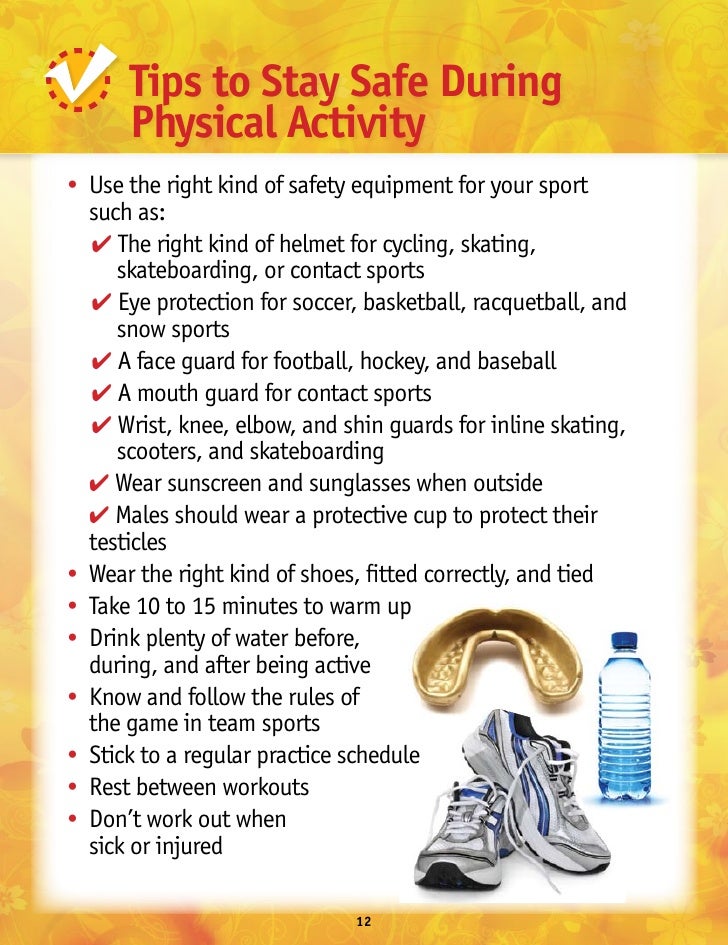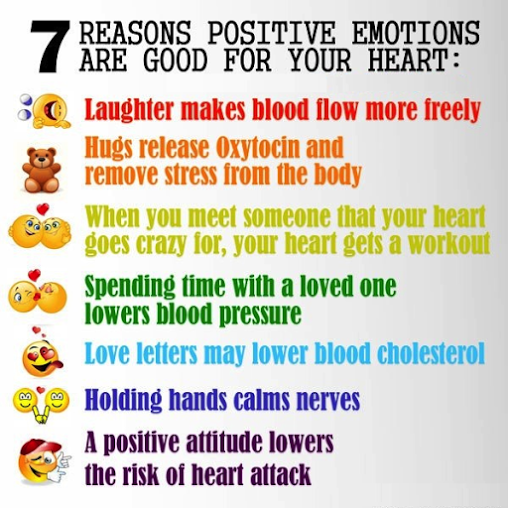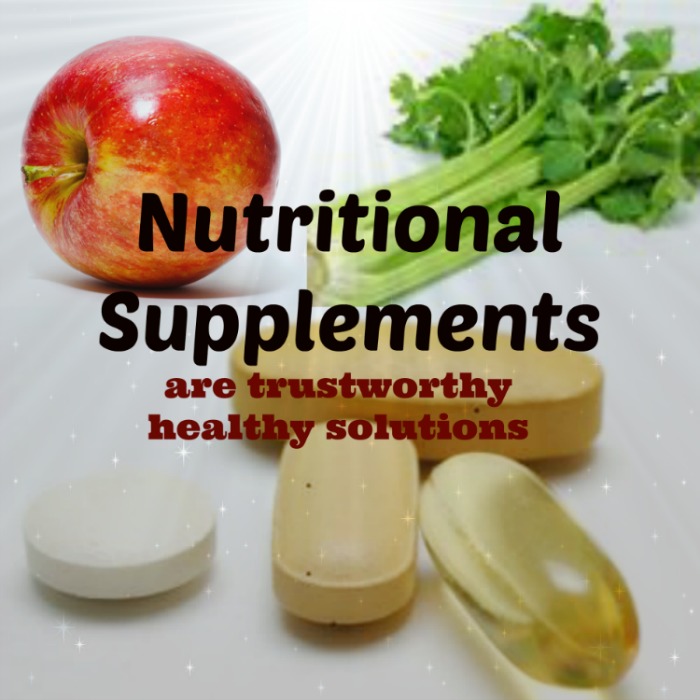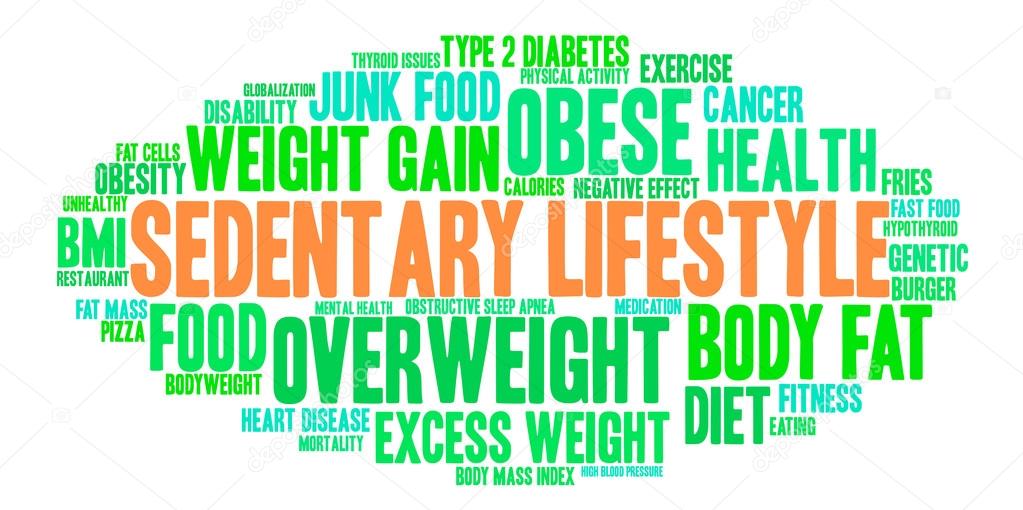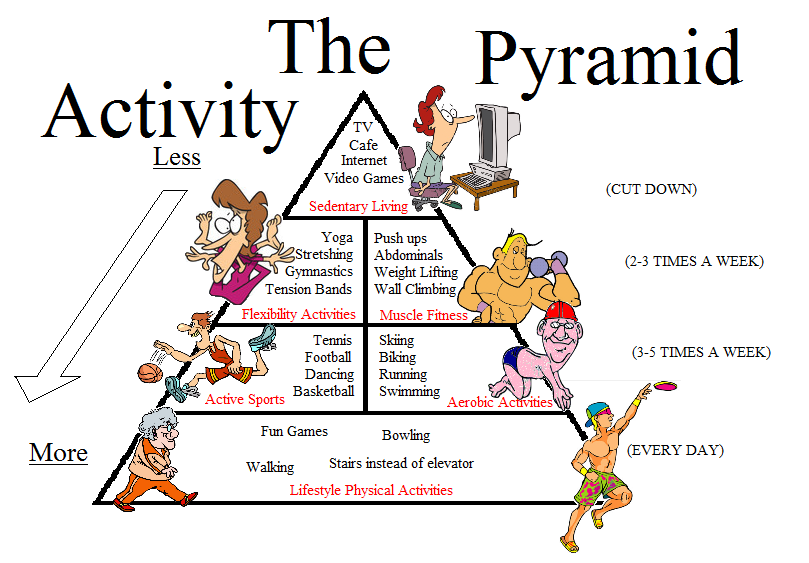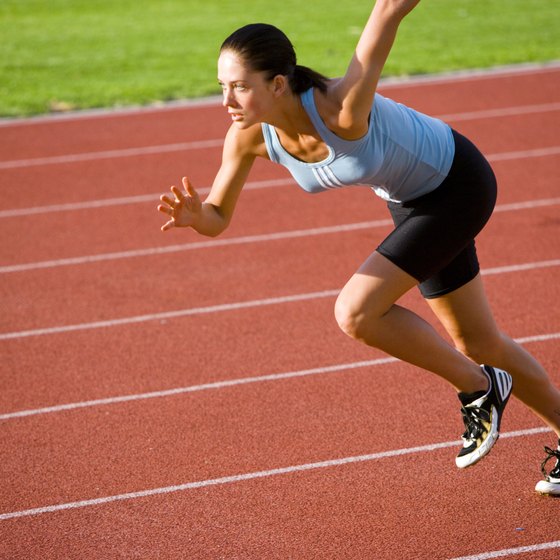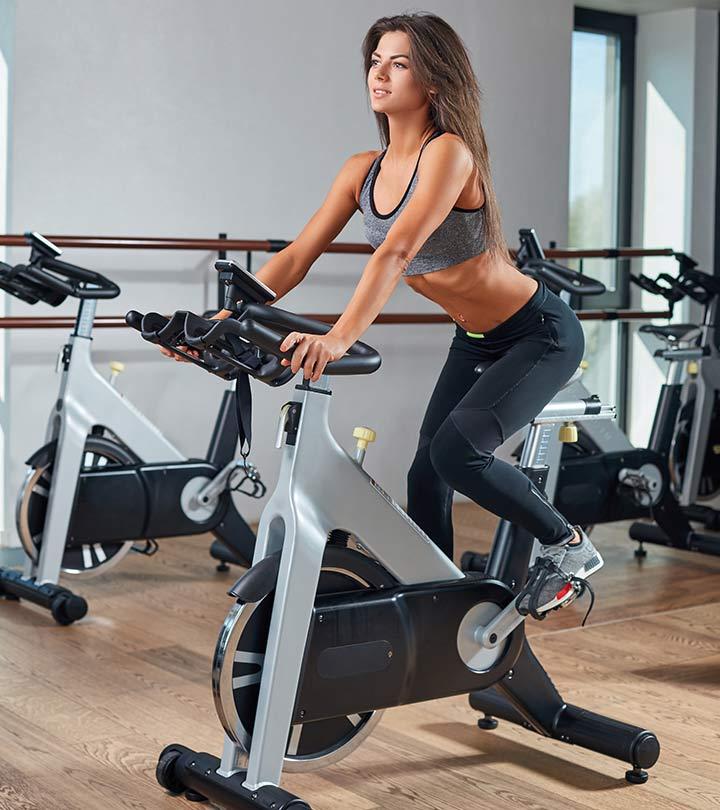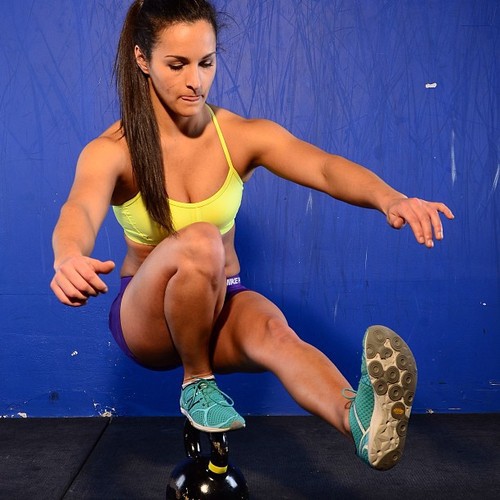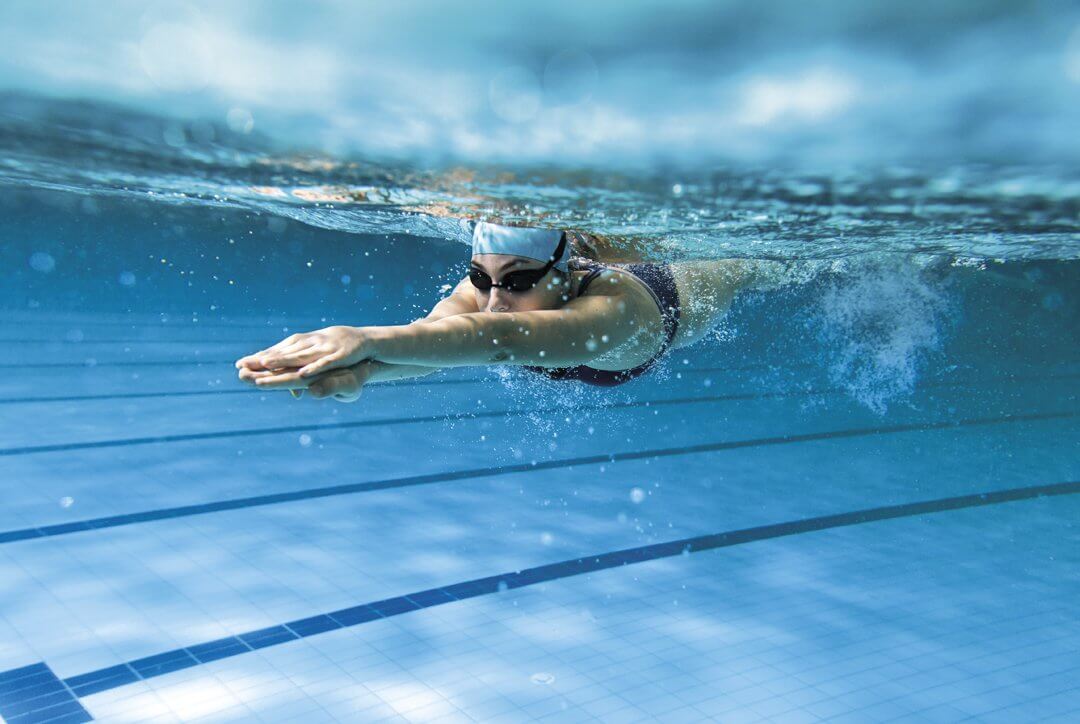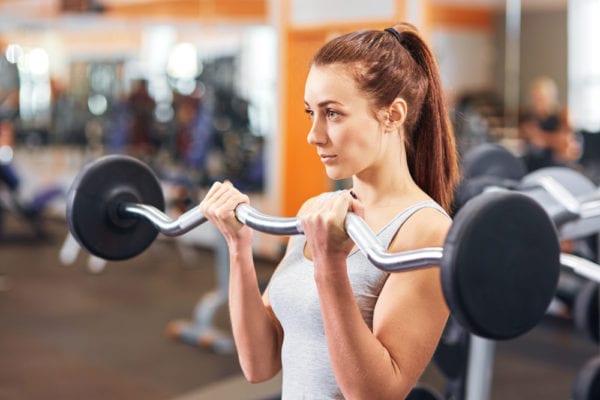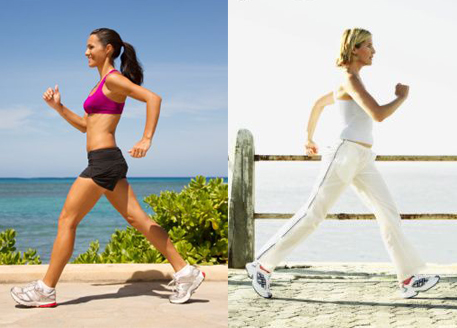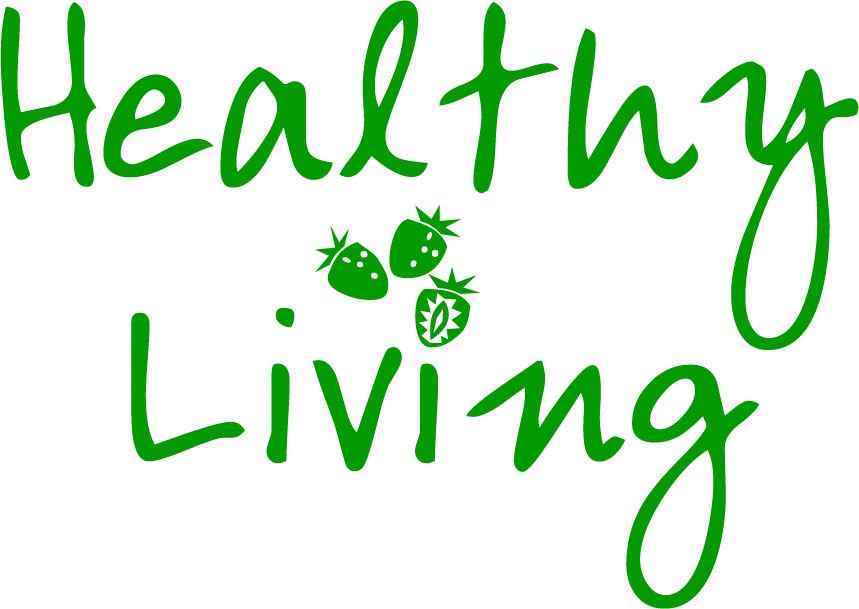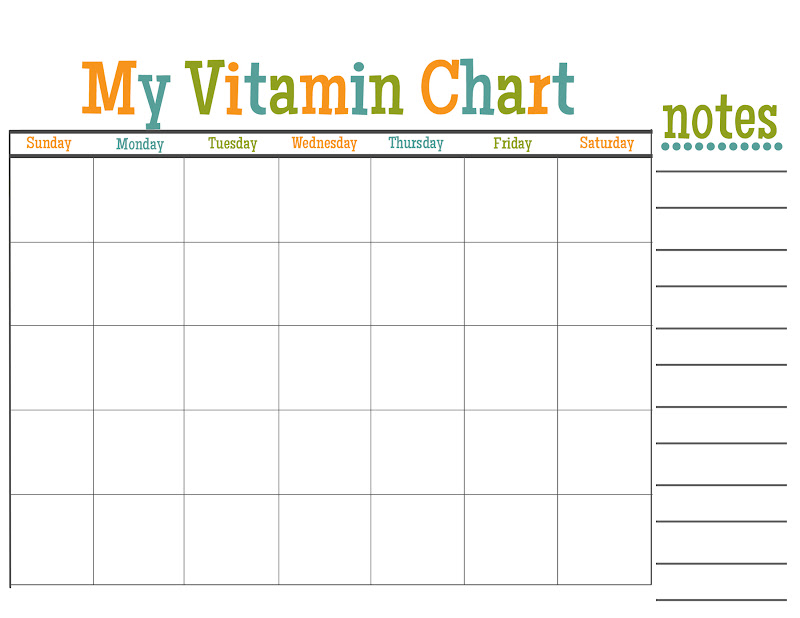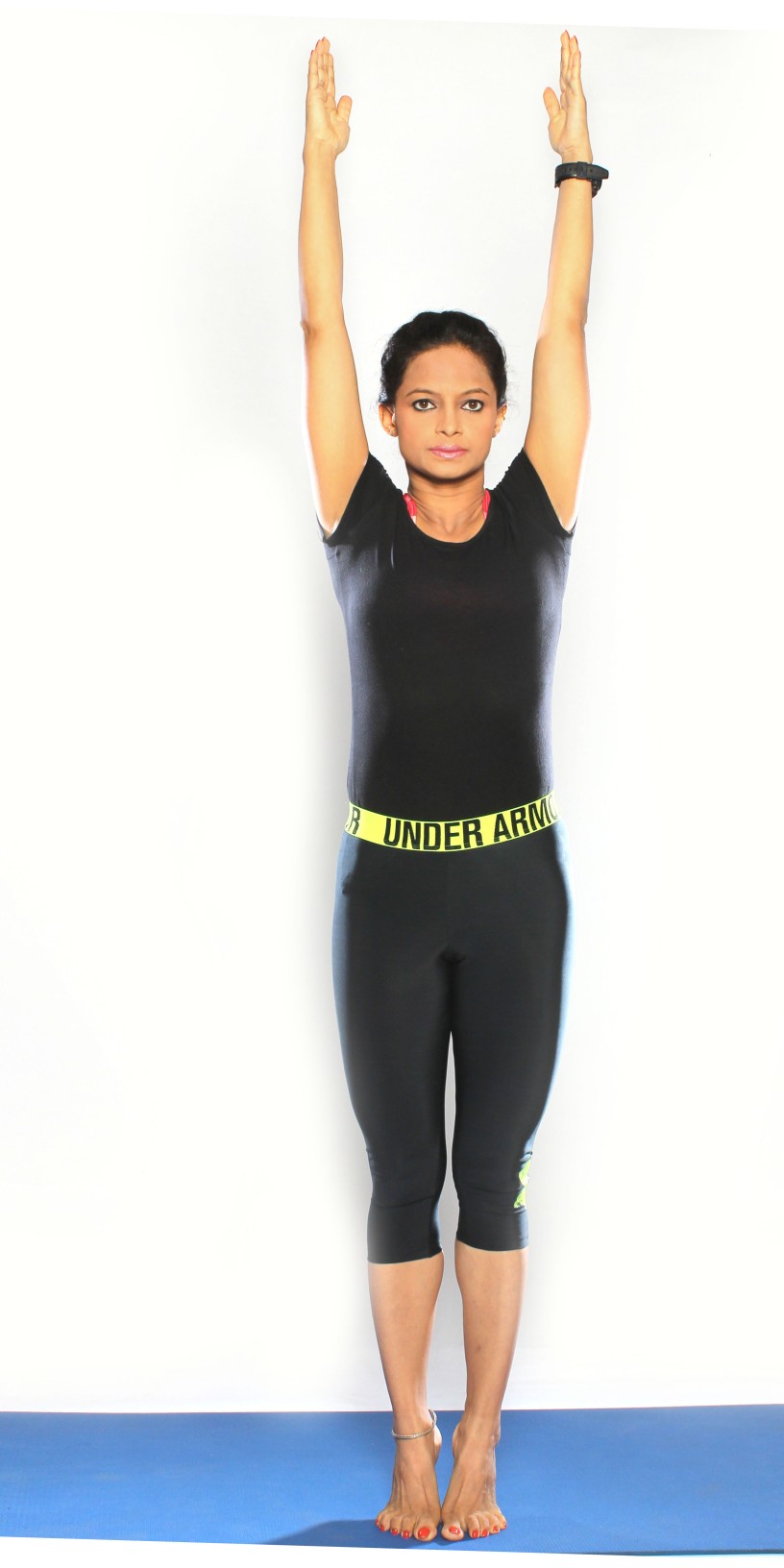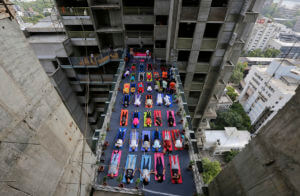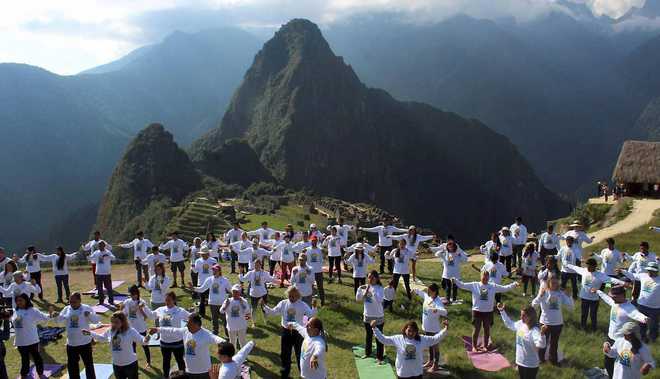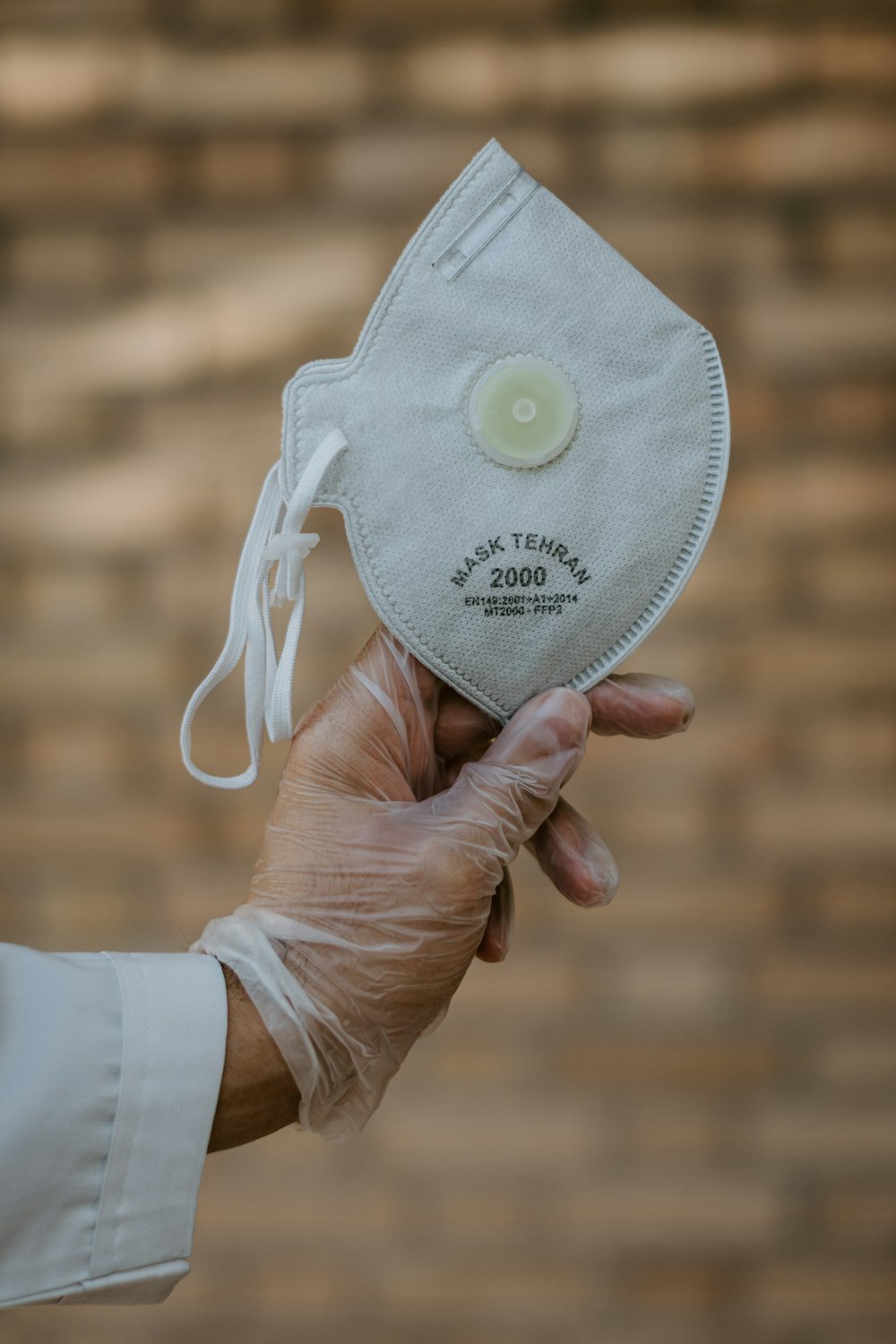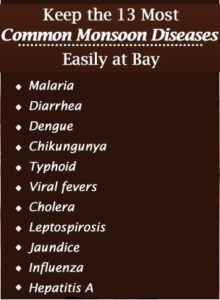Health and Fitness Rules
TO KEEP THE BODY IN GOOD HEALTH IS A DUTY…
OTHERWISE, WE SHALL NO BE ABLE TO KEEP OUR MIND STRONG AND CLEAR
When it comes to achieving overall well-being, you need to balance many key aspects of health, including diet, exercise, sleep, professional care, and socialization. Even just remembering to smile is a way to stay healthy and keep your blood pressure down.
In today’s quick-fix culture, it’s more important than ever to remember that a few simple lifestyle changes can transform your overall health.
healthhelp.in has been regularly posting about health, fitness and other related topics since in a world rife with nonsense hacks and cleanses, doing so is more important than ever. Below mentioned points are basic and essential to follow for long and healthy life.
Do something active every day – You need not put in heroic efforts, but you should use your body every day, whether that’s a fast-paced walk, a hike, or an hour in the garden. Decades of studies show that just 30 minutes of moderate to intense daily physical activity lowers your risk for heart disease, Alzheimer’s, depression, and many types of cancer.
Do stay engaged in life – Involvement in activities you find meaningful and groups you care about increases both quality and quantity of life. Studies show that individuals who have a strong sense of purpose—in other words, a reason to get up every day—tend to outlive those who don’t. Other research points to robust social interaction as critical for both mental and physical health.
Don’t overeat – Keeping calorie intake in balance with calories burned is critical. Obesity is one of the gravest health threats in the world. A recent study in the prestigious Journal of Medicine found that obesity has doubled in more than 70 countries since 1980 and accounts for more than 4 million deaths every year. Another study found that obesity is now the second leading cause of early death, behind only tobacco.
Don’t drink to excess – Excessive alcohol use is associated with a number of chronic diseases, such as liver cirrhosis, throat cancer, and cardiovascular disease. Drinking too much also impairs sleep and daily function. The good news is that if you enjoy alcohol, drinking reasonably—one drink per day for women and up to two for men—carries minimal risk.
Never Smoke – At this point, it’s common knowledge but bears repeating: There is absolutely nothing more damaging to health, wellness, and fitness than smoking. It is associated with dozens of types of cancer, as well as heart disease, dementia, and chronic obstructive pulmonary disease.
According to the American Cancer Association, smoking causes one out of every five deaths in the United States, killing more people than alcohol, car accidents, HIV, guns, and illegal drugs combined. If you do smoke, there is some good news: According to the Centers for Disease Control and Prevention, your body literally starts repairing the damage caused by smoking within days of stopping.
A HEALTHY OUTSIDE STARTS FROM THE INSIDE
Click here for Health and fitness are usually made to seem too complex.
If you read a lot of fitness magazines and blogs (as I often do), you’re told a confusing variety of complex advice. It makes your head spin. You’re told that eggs, butter, and meat are bad for you. Then another crowd will tell you those same things are actually good.
Then you’ll hear running is good for you, and the bodybuilding and primal crowds will scoff at longer-distance running.
You’ll hear that lifting weights is the best way to get into shape, and others will laugh at that. You’ll hear a million variations of the best workouts, of when to time your nutrition, of how to periodize your workouts, of how to measure fitness, of what supplements you need to take ….
It’s enough to make you want to give up.
Fortunately, fitness doesn’t have to be that complex.
In fact, you can boil it down to two simple rules:
1. Get your body moving on a regular basis; and
2. Eat a moderate amount of real, whole foods (with occasional indulgences).
If you stuck to those two rules and stuck with them for a while, you’d get fit. Doing one but not the other will result in an improvement in health for many people (not all), but it would be incomplete health. Do both most days of the week and you’re on your way to health and fitness.
The two rules above are all you need … however, most of us need a little more detail, so here’s a more complete set of simple fitness rules. As always, remember that 1) I’m not an expert — this is just stuff that’s worked for me; 2) this is for healthy adults — people with health problems should seek the advice of professionals.
1. Get moving. Try to do some kind of physical activity most days of the week (4 or more days if possible). If you have an aversion to exercise, don’t think of it as exercise. Just think of it as a way to get your body moving in some fun way. It can be dance, yard work, hiking, a nature walk, a swim, basketball, rugby, cycling, even housework if you do it vigorously enough.
And it doesn’t have to be the same thing each day. You are recommended just for the sake of simplicity, that you do find a regular time slot you could do your daily activity, most days of the week. I prefer mornings but others enjoy lunchtime or after work.
2. Enjoy yourself. Whatever activity you choose, it has to be fun. If you don’t like it, move on to something else. Focus on the fun part, not the hard part. Or learn, to enjoy the hard stuff! Again, make it fun, or you won’t keep it up for very long. To make sure it’s not too hard, start easy. Focus on just getting moving and enjoying the activity. Start small, and build up with baby steps.
3. Slowly add intensity. Once you’ve been doing an activity for a little while, and you’re in decent shape, it’s good to add some intensity. But slowly — if you add intensity too quickly you’ll risk injury or burnout. So let’s say you’ve been doing some walking for a couple of months — you should be ready to add a little jogging or fast-paced walking, in small little intervals.
If you’ve been running, try some faster-paced intervals (take it easy at first) or hill workouts. If you’ve been strength training, be sure to add weights (safely) or decrease rest time or add more reps or sets. If you’re playing a sport, really speed things up, or focus on explosive movements. Intensity is a great way to get yourself in shape and have an effective workout in only 20-30 minutes.
Here’s a great way to do bodyweight exercises with intensity: do a circuit of bodyweight exercises (such as pushups, pullups, squats, burpees, Hindu pushups, lunges, or others) and do as many circuits as you can in 10 or 15 minutes. Next workout, see if you can do more circuits. It’s great!
4. Minimal equipment. There are a million different exercise gadgets out there, from ab machines to elliptical trainers to a whole slew of weight machines at the gym. Your rule should be: keep it simple. You can do amazing things with bodyweight exercises — in fact, if you are a relative beginner, you should start with bodyweight exercises for at least 6 months before progressing to weights.
You don’t need cardio machines — just go outside and walk, run, bike, do hills, climb stairs, sprint. Even if you do weights, a barbell or dumbbells are all you need — stay away from the machines that work your body at angles it’s not meant to use (although cable machines aren’t bad).
Even better, get outside and do sprints, pushups, jump over things, pick up big rocks and throw them, do pullups from a tree, climb up rocks, swim, do a crabwalk or monkey walk, take a sledgehammer or pick and slam it into the ground, flipping tractor tires, and generally get a great workout with very little equipment.
5. Just a few exercises. Bodybuilding routines will have you doing 3-4 different exercises per body part. That’s too complicated for most people. Keep it simple in the weight room: squats, deadlifts, presses, chin-ups or pullups, rows. You can do a lot with just those lifts.
Of course, you’ll want to mix it up eventually with some variations, but no need for 10 different ab exercises or things that focus on your rear deltoids or use swiss balls. If you’re doing bodyweight exercises, enjoy things like pushups, burpees, squats, lunges, pullups, dips, planks. Pick a few and do some circuits with little rest.
6. Eat real foods. One of the most important rules on this list, because if you don’t eat right (most of the time), it doesn’t matter how much exercise you do — you’ll get fat and unhealthy. Aim for real, whole foods that are as close to their natural state as possible.
That means stay away from processed, refined, fatty, sugary foods. Veggies, fruits, lean meats, dairy, nuts, beans, whole grains, eggs, seeds. Prepare them yourself if possible — convenience foods often have added ingredients, as well as extra salt, fat, sugar, and preservatives. If you follow this diet — with the plant foods making the bulk of the diet — it’s hard to go wrong.
7. Eat less. Most people eat too much, and eventually, it shows up as fat. To lose that fat, we need to eat less — it’s really that simple. Of course, if you eat the real foods mentioned above, you’ll probably consume fewer calories, but even so, it’s smart to reduce how much you eat overall, at least until you reach a healthy level of body fat (and even then, you shouldn’t let it all go).
One way to do that is by eating slowly and mindfully until you’re just satiated (not stuffed). Another way is to eat smaller meals and watch the portions. A third way is intermittent fasting. However, if you do it, be sure to consume the real food in moderate amounts, and reduce your calorie intake if you’re looking to lose fat.
8. Give it time. This is what gets many people — they expect to see results immediately, within the first month or so because the magazines they read make it seem so instantaneous. But real fitness rarely happens this way — it’s a process and a lifestyle change.
If you started out in really bad shape, really overweight, begin with ring habits like quit smoking and start running. A year later, run a marathon and be vegetarian. A year after that, Start exercising regularly, so you will make progress, but still a long way to go.
After some time, you will be in great shape — slimmer and more muscular and much healthier. But accept the fact that it takes time. You didn’t gain the fat overnight, and you won’t lose it that way either. Learn to enjoy the process, enjoy the activities, enjoy the healthy, real food, and you’ll get healthy and fit almost as an afterthought to this new, amazing lifestyle.
YOUR FUTURE IS CREATED BY WHAT YOU DO TODAY NOT TOMORROW
Shilpa Shetty Kundra’s Fitness rules –
Live a disciplined life – Commit to a lifetime of modification. A month or week’s commitment will not help you.
Meditate Daily – Do yoga for 40 minutes, at least five days a week. If you do not have time then go to any garden and breathe it will make a lot of difference to the day that follows.
Plan three definite meals – Breakfast should be had between 8 am to 9 am. Start your morning with a glass of warm water with lemon juice. This alkalizes your body. Have your lunch between 12 pm to 1 pm, and dinner between 7.30 pm to 8 pm. Make sure your dinner includes some soup.
Do not eat anything raw post at 6 pm, not even fruits. Do not have anything post 8 pm other than water. Avoid aerated drinks and junk food.
Sleep for six to seven hours – sleep is a prerequisite. Whatever you do — study, work, or exercise — will not reach its full potential if you don’t recharge your body with a good night’s sleep.
Cook food with oils made in our country – Use coconut oil, mustard oil, groundnut oil, etc. Do not cook with olive oil. That is a complete no-no.
Substitute all white items with brown. Brown rice instead of white, brown sugar instead of white, brown bread instead of white, and so on. I also recommend seeded bread and sea salt.
Substitute cow’s milk with buffalo’s milk – It has more iron content.
Have a cheat day – For me, it is Sunday, when I eat anything I want without feeling guilty. It is about looking out for your mind over your body. If you eat and are not happy, it obstructs your digestion. So, follow a strict diet, but train your mind to think that what you eat will make you healthier.
FITNESS IS NOT ABOUT BEING BETTER THAN SOMEONE ELSE …
IT’S ABOUT BEING BETTER THAN YOU USED TO BE
Click here Fitness Rules
Below are the rules of fitness. I believe that any one of these tips in isolation could drastically improve your health, fitness, training, or physique. Try to apply as many as you can and watch on as your body transforms into the lean and strong machine that you’ve always dreamed of …
1. Log Your Workouts – Tracking your workout is essential. It’s the only way you can truly judge if you are making progress. Plus, if you ever find yourself out of shape, you can check back with the training you were doing at the time and repeat it to regain the conditioning.
2. Mobility Drills – Exercise isn’t all about aesthetics, we also have to look after our body and ensure that our muscles and joints work fluently through a full range of movement. Daily mobility drills like stretches can help keep your body working as it was intended to. This one gets more and more important with every passing year.
3. Intermittent Fasting – Skipping breakfast could be the best move you ever make. Intermittent fasting or once a week can keep your body’s natural growth hormone active for longer, offset the aging process, and help keep you lean.
4. Eat accordingly – We all know there are recommended daily allowances for things like calories, but it’s easy to forget that our actual lives fluctuate rapidly from day today. We rarely expend exactly the same amount of energy two days in a row, so it stands to reason that we should approach food intake on a day-by-day basis. If you exercise a great deal on Monday and do nothing but chill out and relax on Tuesday, you’re going to need more fuel on Monday than Tuesday.
5. Ice Baths – Taking an ice bath or hitting a plunge pool after a heavy training session can significantly speed up the recovery process. It squeezes the blood out of your muscles whilst you’re in the water, meaning that when you get out your hit by a flood of brand new oxygen-rich blood. It’s agony, but it’s worth it!
6. Progression – Exercise is all about progressive overload, so don’t get caught up in a rut doing the same workout over and over again with no forward momentum. People who aim to ‘maintain’ often end up going backward. Do more each time you work out – even one extra rep over an entire session is enough to represent progression.
7. Learn how to time your workouts – You have to be able to predict when you’ll get the most out of your training sessions. It’s an individual thing: you may find that you just don’t have the same output in the evening as you do in the morning or vice versa. Experiment with different training times and find what works for you.
8. Use of supplements To Preserve Muscle – Usually supplements are not recommended, but there might be one that helps to protect your hard-earned muscle that seems like a no-brainer. You can take one supplement in the mornings (due to intermittent fasting) as well as pre and post-workout to prevent catabolism. It’s such a small price to pay for ‘muscle insurance’
9. Train Your Legs – Don’t be the ‘every day is upper body day’ guy. So many make the mistake of never training their lower body and end up with an unbalanced physique, both aesthetically and functionally. Training your legs properly will raise your testosterone and growth hormone production and actually make your whole body more anabolic.
10. Train Your Glutes ( muscles of the buttock ) – So now you will start training your legs. But are you really training your whole leg? Do you realize how important your glutes are to your athletic performance, not to mention how attractive they are to the opposite sex? Ladies like a pert, toned bottom just as much as men do. Hit your glutes hard and regular. Use weighted lunges, deadlifts, and hip extensions to develop the perfect man butt.
11. Train You Calves – After training glutes start with your calves. Nobody likes calf training, because, well, it hurts. There are so many nerves down there that genuine calf training if pretty painful- but when all is said and done, that’s no excuse to leave them off your agenda. Weighted calf raises once a week should be enough to bring them up. People notice calves, believe me!
12. Talk To Experts – Guesswork is the worst thing you can do in the gym: it leads to poor results and a lot of wasted time and money. If there’s a question you don’t know the answer to, just ask a pro. You don’t have to sign up with a personal trainer, just ask one in the gym or via email. Most love what they do and are pretty happy to help.
13. Get Your Mind Right – I once read a study that up to 13pc of gains from a workout can be the result of simply performing it mentally. Be focused and think about what you want to achieve. Get your mind in the game. Know your outcome for every workout and what your overall fitness goal is; your brain is more powerful than you think.
14. Avoid Crash Diets – Unless you have been at your ideal weight for some time and regularly eat balanced, healthy meals, you really have no business at all doing any kind of diet. And even then it would be to achieve an advanced goal like competing in an event or doing a photoshoot. Crash diets tend only to lead to a loss of muscle and are, by definition, temporary. Avoid diets at all costs and just focus on the basics of healthy eating.
15. Drop Your Ego – Nobody cares how much weight you lift. Nobody is watching and nobody is tracking. What does draw attention is the terrible lifting technique. Lifting well beyond what you can handle just to look good in front of other people is pretty much the same as tattooing “I’m insecure about my strength” on your forehead.
If you can’t bench, squat, deadlift, and curl with immaculate technique, it may be time to drop down a weight, develop authentic strength, and come back to lift heavier another day. If it really respects you’re after, that’ll be how you earn it.
16. Get Outside – You don’t have to be cooped up in the gym for every workout. There are plenty of opportunities to get outside and train in the fresh air. Sprints, circuits, and TRX workouts all provide a great opportunity to head to your local park and enjoy the fresh air.
17. Have A Mantra – When times get tough in the gym and you just don’t feel like you have the will to train, you need yourself a mantra to get you through. “You Never Know Your Limits Until You Push Through Them”.
18. Dress To Impress – Dressing well in the gym can make a big difference in how you feel. Feeling good in your gym kit adds motivation and makes you feel that all the effort you are putting in is worthwhile. You can also use it as an intrinsic motivator: if you only have tight-fitting gym wear it’s pretty clear for all to see when you aren’t in shape, so you won’t stay there long.
19. Don’t Look For Shortcuts – Don’t go by philosophies about whether performance enhancers like steroids and potent thermogenic are inherently right or wrong. Neither should even be considered without truly earning your right to say that you have reached your natural potential the old fashioned way.
If you are hoping to find the perfect physique at the bottom of a pillbox, you are setting yourself up for a lot of disappointment.
20. Train In Phases – Your body gets used to the same exercise stimulus after about four to six weeks, grinding your progress to a halt. Switch stimulus by training in six-week phases. For example, this could mean switching from a hypertrophy phase to a muscular endurance phase followed by a fat-loss phase.
Plan your training 24 weeks in advance and always switch up to a new phase after six weeks. This is how athletes and bodybuilders train. Success leaves clues; follow what the pros do and you won’t go far wrong.
21. Get Over Setbacks Quickly – Everyone experience setbacks in life. Health and fitness are no different. The most common exercise setbacks are typically injury and illness. When you get struck down, rest up, recover, and when you feel like you can train again, return with vigor.
Never get down in the dumps about a setback. Yes, it’s frustrating, but time is going to pass anyway so the sooner you get back on the horse the better.
22. Oil The Machine – Exercise takes its toll on your muscles, joints, and tendons so be sure to take steps to repair the damage. These might include using a foam roller, getting a sports massage, using cold showers and saunas for hot and cold therapy, and just making sure you get enough sleep.
23. Basic Supplementation – There is a lot of debate as to whether supplements are worth the money we pay for them, or if they even work. The way I see it, the cost to benefit ratio is just too highly stacked in our favor to ignore.
Because of modern transportation and supermarket logistics, by the time our food reaches us it often no longer contains the full spectrum of vitamins and minerals that nature intended. To account for this you are recommended that everyone take a multivitamin and a multi-mineral supplement.
At such a low cost, why would you not want to take your shot at optimal health?
24. Cultivate Your Environment – Making progress isn’t just about what you do in the gym. It’s just as important to cultivate a living environment conducive to your fitness goals. Aim to create a system for healthy food delivery, make your supplements easy to reach for those early morning training sessions, and make sure you have enough training kit on constant rotation. There’s no worse excuse for not training than having no clean kit!
25. It’s You vs You – Never be disheartened by the progress or condition of others. Everyone has their own genetic make-up, their own goals, and their own demons. All you need to concentrate on is being better than you were yesterday.
26. Be A Mentor – Remember what it was like to be young and starting out in fitness? Or your first day in the gym? The experience you accumulate over time may feel unimportant to you, but it represents small nuggets of gold for someone starting out. Be available to those that need encouragement, help, and guidance.
27. Don’t Get Boring – Sure, it’s great having a totally ripped physique and being the most muscular guy in the room. But don’t get so obsessed that it’s all you think and talk about. If you can’t lead a normal life because of your exercise goals, it may be time to stop and think. Dedication is one thing but obsession is never healthy.
28. Never Let Anyone Hold You Back – Peer pressure is a powerful thing, but you have to overcome it in pursuit of personal fitness. Remember that when people try to make you feel guilty for not drinking or for staying at home on a Friday night, they’re mainly doing it out of a sense of jealously.
If you’ve decided that your fitness goals have the number one priority in your life, don’t let the carping of others detract from them.
29. Get Compound – Never substitute tried and tested compound exercises in the name of isolation or the latest exercise craze. The classic exercises have earned their status because they’ve been tried and tested over time. Be sure that your strength training regime includes exercises such as squats, deadlifts, barbell rows, shrugs, lunges cleans, and presses.
30. Avoid Overtraining – Overtraining occurs when you train too hard, too frequently, and don’t get enough rest. Overtraining literally feels like having the flu and will completely take you out if you let it grab hold of you.
Be sure to take adequate rest between workouts, especially when attempting intense programs or coming back after a lay-off. If you start to feel fatigued, experience an elevated heart rate while resting, or feel like your workouts are deteriorating for no reason, it’s time to take a break.
31. Get Tested – The more you can learn about your body the more information you can act on to get the results you are looking for. Body composition, hormone analysis, food intolerance, and metabolic gas exchange tests are all available relatively inexpensively given how much they can aid your training efforts.
32. Get A Training Partner – Enlisting the help of a friend to keep you focused and accountable can pay dividends over time. A great training partner gets you to the gym when you least feel like it, motivates you to train past failure, and celebrates your achievements with you.
33. Relationships Do Not Spell The End – There is a curious phenomenon that has been observed while working in the fitness industry: when men enter a long-term relationship, they let their training, physique, and diet go to ruin. If you were in shape when you met your partner and you aren’t now, something is wrong.
Think about it like this: if you were only in shape during the dating process, you were effectively erecting a facade. Obviously life hands us family demands and unforeseen circumstances than can affect training.
34. Avoid Ab Obsession – Revealing a rippling six-pack is all about having low body fat. Too many people spend way too much time training their abs to oblivion and wondering why they never show. Truth be told, you need 10pc body fat or lower to have visible abs and that is best achieved through a clean diet and a steady mix of total body strength training and well-planned cardio. Work your abs as frequently as you would any other body part; no more, no less.
35. High-Intensity Cardio – When trying to get lean you are recommended two types of cardio: high and low intensity. High intensity provides a great way to increase the number of calories burned throughout the day. Intervals, sprints, and high-intensity workout drills are all great options for that metabolism spike
36. Low-Intensity Cardio – Low-intensity cardio is defined as exercise that keeps your heart rate between 105-120 BPM. At this heart rate, you might not burn as many calories as with the high-intensity stuff, but you do burn a higher proportion of those calories from fat. Low intensity provides a great tool in your quest for leanness that won’t affect how you recover from your other workouts.
37. Sport Specific Training – We’ve come a long way from the days of one-size-fits-all resistance training. If you take part in a sport at any level you can vastly increase your performance by training specifically for it. For example, runners may want to work on strengthening their legs and core to support them in a long run, whilst rugby players should be doing extra work on speed agility and quickness to improve their game.
38. Acknowledge Age, But Don’t Be Limited By It – No one can ignore the passing of time, but it’s simple enough to adapt training and account for changes in your body as the years pass. For example, it takes a little longer to recover in your forties and fifties than it does in your twenties, and you start to lose some muscle if you don’t actively work to maintain it. That being said, age is no reason not to have great health. Be the outlier and don’t allow the idea of ‘age’ detract from your goals.
39. Experiment – Don’t be afraid to experiment on yourself. Change your training stimulus and try new workout programs to see what works for your body. Do you respond best to jogging, sprinting, or walking when trying to get lean? If you don’t know, you should find out – you may stumble on the blueprint to your perfect physique.
40. Train On An Empty Stomach – If training on an empty stomach can work for your schedule, you may stand to benefit from an instant increase in performance and gain an ace up your sleeve in the battle against body fat. It sounds counter-intuitive, but fasting before exercise really can help: without a store of food to turn into energy, your body turns to its own fat cells, burning away some of the excess blubbers. It also delivers a huge insulin spike after training, kick-starting the recovery process right when you need it.
41. Range Of Motion – Aim for a full range of movement with every exercise you perform. This allows more muscle fiber to be stimulated and damaged, meaning greater muscle growth. Controlling the pace of movement will also help.
42. Hydration – Perhaps one of the most overlooked principles of fitness. Even the smallest degree of hydration can significantly affect your exercise performance, mood, and ability to problem-solve. Remember that every single ailment humans are subjected to can be improved with water. So, it stands to reason that if we want to perform, we must stay hydrated.
43. Drop The Weight Worry – Unless you’re a boxer, what you weigh when you stand on a set of scales doesn’t really matter. Instead, the important aspect, in terms of feeling fit and looking good, is your body composition. Is your weight comprised of a lot of blubbers or good, toned (and heavy) muscle?
44. Prepare For Running – While probably the lowest barrier to entry in terms of picking an exercise pursuit, running is not as simple as just heading out of the door – at least not if you want to optimize your body to perform. Running demands a lot of your body, especially over long distances. Head to the gym to develop your quads, glutes, hamstrings, calves, core, and shoulders to make sure your body can withstand the strain running puts on it.
45. Visualize – Have an idea of what you would like your body to look like and hold that image in your mind. You can revisit the image whenever you need extra inspiration. It’s a very powerful technique that has worked for many of the world’s best bodybuilders – and, because it’s all in your head, no one has to know what you’re thinking.
46. Keep Nutrition Simple – Great nutrition doesn’t have to be complicated. Always opt for the highest quality food sources you can get your hands on. The closest you can get your food to the way it occurs naturally the better. Keep protein high to maintain muscle, opt for low glycemic index carbohydrates, try to get plenty of unsaturated fats, and eat as many leafy greens as you like. Simple!
47. Take A Week Off – Sometimes the best thing you can do for your body is nothing at all. After a really hard six-week training phase, it’s usually a good idea to take a complete week off training. This allows your body to fully repair and recover from the grueling demand you’ve put on it. If you really can’t bear to be away from the gym, opt for a 50pc week. No one can keep going full pelt forever.
48. Pre & Post Workout Nutrition – Pre and post-workout meals are probably the most important meals of the day. At least, they are the meals that should be most thoughtfully constructed. Ensure that your pre-workout meal is going to provide enough energy to get you through the exercise by consuming high G.I food sources (like white rice and pasta) that will provide an immediate burst of energy. Post-workout, you need to kick-start the recovery process so keep the high G.I carbs, but add protein and additional supplementation to start the repair process.
49. Have A Plan – Every time you enter the gym you need to have a plan. You should know exactly what exercises you are going to perform, for how many sets and how many reps you are aiming for. Without this, you will waste time and possibly select the wrong exercises. The same applies to nutrition: every day you should know how many calories you need to consume.
50. Consistency Triumphs In The End – With all the advanced training principles, dieting secrets and magic bullet supplements at our disposal, the people who really succeed in fitness are the ones that keep things simple and consistent. After a great workout and the clean meal will trump any genetic or synthetic advantage over time. Decide where you want to be, take the first step, and don’t stop until you achieve it. Honestly, it really is that simple.
IF YOU THINK THE PURSUIT OF GOOD HEALTH IS EXPENSIVE AND TIME-CONSUMING, TRY ILLNESS
Click here for Basic rules for healthy long life -
Being truly healthy is not just the absence of disease or illnesses. Good overall health is a balance of many aspects of life: a healthy diet, regular exercise, getting enough sleep, professional and personal care, and healthy social interactions. But with the many stressors in life, it can be quite challenging to maintain good health. Following fundamental steps will help you achieve better health and fitness.
Stay hydrated – Keeping yourself hydrated does not only fuel your cells, it also helps in regulating body temperatures and heart rate. Water is one of the main things you lose if you are doing an exercise and it is important to replenish what is lost to keep your body hydrated.
Calories do count – Calories in and out sums up a lot how well a diet works. The general rule of thumb – if your goal is to lose weight you need to burn more than you are consuming every day.
Get to know your macros – Protein, fat, and carbohydrates. They all matter, and affect how quickly you see results. If your goal is to lose weight, stick to the high protein, and lower carbohydrate diets. When you do eat carbs, eat them after a workout. Get your fats from good sources like healthy oils and quality meats.
Food should be a nutrient, not a drug – Think of your body as a Ferrari. You want to put in the best fuel you can at least 80%-90% of the time. People often use food as an anti-depressant, and choose treats with little nutrient value that they think will make them feel better. Foods containing high-fructose corn syrup as well as sugar, fat, and taste enhancers can lead to behavioral reactions similar to those caused by drugs such as cocaine.
Your mind and brain need a breather – Taking a few moments out of the daily grind is essential to reduce stress, which makes you vulnerable to illness. Ways to give your mind and brain a “time out” include breathing exercises and meditation. You can elicit a “relaxation response” by performing diaphragmatic breathing, in which you hold your breath for a second, then slowly exhale through the mouth while focusing on a word or phrase
Recovery is as important as the exercise itself – During exercise, recovery is an essential component that enables the body to adapt to the stress created by exercise, helps restore muscle glycogen, and allows for repair of body tissue. If you don’t recover, your pulse rate is going to go up every morning instead of down, and then you’ve got a problem.
Be Social – Social people are predisposed to better health. There are health benefits to being pro-social as opposed to focusing socially on the self. Social support and expressing love can improve overall resiliency, and your capacity to give social support also has a tendency to feedback to you and pay dividends to your own health.
Keep attainable, realistic goals – Mix some reality into your training plans as well as your aspirations for healthy living. Setting goals that aren’t attainable is a recipe for disappointment. When setting up a diet or exercise regimen, striving for an A+ rather than a B isn’t the best option. Getting a B+ is pretty damn good in healthy living.
Think long term, not short – It doesn’t matter about your weight or fitness a month from now or two months from now; it matters a year or two from now. Long-term health is more important than setting an arbitrary weight-loss goal for two months from now. People take these really short-term outlooks. They try hard and then quit.
Keep healthy snacks handy – Keeping a handy snack wherever you go is essential for your fitness goals. This is a very important reminder especially when you are traveling. The tendency to get hungry and overeat during pit stops when you drive for long hours or when you travel is a high risk. Just make sure to prepare or keep healthy snacks and always avoid junk foods when traveling.
Protein and nutrition are good for you – Protein is one of the major building blocks of the human body. Microscopically, your muscle breaks down after working out, but over the next 24 hours, it rebuilds. The rebuild of muscle is where you gain strength, making protein a crucial part of this process. Proteins assist in speeding up recovery from the previous intense exercise. Lean meat is always a good source of protein. Green, leafy vegetables, and nuts are also good options if you are on a vegan or vegetarian diet.
ITS NOT A SHORT TERM DIET. ITS A LONG TERM LIFESTYLE CHANGE
IT’S NEVER TOO EARLY OR TOO LATE TO WORK TOWARDS BEING THE HEALTHIEST YOU
THE BODY ACHIEVES WHAT THE MIND BELIEVES
DON’T FOCUS ON LOSING WEIGHT, FOCUS ON BEING HEALTHY
DEAR UNHEALTHY SNACK, I’M STRONGER WITHOUT YOU
DON’T WISH FOR IT WORK FOR IT
Click here for Health and Fitness Myths -
Myth #1 – Thinner people are healthy, heavier people are not: You can’t tell how healthy someone is just by looking at them. It’s totally possible for a thin person to be completely sedentary (or a chain-smoker…or both). And it’s also possible that someone who technically has an “overweight” body mass index (BMI) to work out regularly, eat lots of healthy fruits and vegetables, and otherwise follow healthy habits.
Myth #2 – You need to drink 8 glasses of water a day: Nope. OK, yes, you should be drinking water throughout the day, and you’ll definitely be healthier if you drink water instead of drinks with a lot of added sugars (like soda, juices, and other sweet drinks). But everyone’s hydration needs are a bit different, and the specific number of eight glasses isn’t based on any actual research. The general rule of thumb about staying hydrated: Drink enough water throughout the day so that your urine is pale yellow. The darker your pee, the more dehydrated you are.
Myth #3 – Natural is healthy, and chemicals are bad for you: Cyanide is found in nature, and water is a chemical compound (H2O, anyone?). Don’t pay too much attention to buzzwords. Instead, if your goal is to eat healthily, focus on eating more vegetables and fruits, ideally ones that aren’t covered in pesticides, as well as other whole foods. Less processing is generally better because it means you’re eating more nutrients per calories. But the occasional processed food is also totally fine as part of a balanced diet.
Myth #4 – Breakfast is the most important meal of the day: The research on this is mixed, actually. Probably a better way to look at breakfast is: Are you hungry in the morning? If not, then don’t force food into your body when you’re not feeling it. If you are hungry, then you should eat — and if you choose something healthy (with a good combination of protein, fiber, healthy fats, and some carbs), all the better.
Myth #5 – You can ‘spot target’ certain body parts for weight loss – like blasting your belly fat by doing crunches: Unfortunately that’s not how it works. Working out specific muscle groups can make those muscles stronger, but doing a large number of crunches isn’t going to do anything to your belly fat. Ditto lunges and your thighs, and tricep dips and your upper arms. And so on. That’s because muscle doesn’t turn into fat: It grows and gets stronger underneath whatever fat you have. And you also can’t do any exercises that target particular areas of fat.
This all means that if you are trying to lose weight in a particular spot, you’ll need to reduce your total body-fat percentage through a mix of exercise and a modified diet.
Myth #6 – You shouldn’t exercise if you are pregnant: Actually, it’s perfectly healthy (and even recommended) for pregnant people to get regular exercise throughout their pregnancies, as long as they’re not pushing themselves harder than they did before they were pregnant.
Myth #7 – Taking vitamins and supplements will make you healthier: There’s growing evidence that you don’t need to take all the vitamins and supplements you think you need to take. You do need vitamins, but if you’re eating a balanced diet, you are likely to get what you need from your food.
Myth #8 – Doing hours of cardio – such as running: is the best exercise to do to lose weight: If you get on the treadmill in a steady-state, your body will get back to its normal metabolic rate within a couple of hours. That means you’ll return to burning the normal amount of calories that you usually do. But if you do metabolic resistance training, your “afterburn” lasts a lot longer — for 24 to 36 hours (or more) after you stop exercising. Metabolic resistance training is actually a much more efficient way to burn fat than running or elliptical-ing for hours.
Myth #9 – Women who lift weight gets bulky: Everyone’s body has a different response to different types of workouts, and some people are more prone to getting bigger, more noticeable muscles than others. But you’re not going to get incredibly jacked (like, muscle-mag jacked) unless you’re actively trying to. Metabolic resistance training with weights is actually a way more efficient way to burn fat than just doing cardio. And not to mention: Lifting weights is great for your health, for your heart, for your strength, and more.
Myth #10 – You are eating for two when you are pregnant: Most doctors recommend that you only eat about 300 extra calories a day when you’re pregnant — not enough food for two whole people.
Myth #11 – If you have a cold, you should take vitamin C to make it go away: While regularly eating foods rich in vitamin C before you get sick might shorten the duration of your colds, taking vitamin C after you’re already sniffling won’t do a damn thing.
Myth #12 – Detox diets or cleanses will purify your body of toxins: Nope. That’s what your liver and kidneys are for. As for detox diets that involve actual food — they may force you to eat more fruits and vegetables and whole foods than you normally do (which is good for you!), but you’re not flushing impurities out of your system. You’re just adding a lot more fruits and vegetables. And potentially not enough calories, depending on the diet.
Myth #13 – Working out will make you lose weight: Most studies show that working out alone, without dietary changes, won’t actually have any noticeable weight-loss effects. That being said, fitness + eating fewer/more nutritious calories is the healthiest and smartest way to burn fat and get in shape, if that’s something you want to do. But if you’re looking at which is more effective at losing weight — only working out or only eating less — eating less will win.
Myth #14 – Antibiotics will help a cold or the flu: Colds and cases of flu are caused by viruses. Antibiotics only work on bacterial illnesses and will be completely ineffective at making you feel better or shortening the length of your cold or flu. The only reason your doctor should prescribe your antibiotics for cold or flu is if your illness has progressed to a bacterial infection (such as pneumonia, for instance).
Myth #15 – Low-fat products are better for you than full-fat products: A lot of low-fat products might have added sugars or carbohydrates to make the food taste better (since so much of the good taste comes from the fat). Also, more and more research is finding that fat (at least the kind that isn’t trans-fat) isn’t the enemy anymore. As long as you’re not eating too much of it, a little fat in your diet can be good for you.
Myth #16 – Yoga is so gentle it won’t cause injuries: Be careful or you might be saying ouch instead of om. Researchers found that yoga can causes injuries often than anyone thought if not done rightly. Yoga has many benefits—from increased flexibility and strength to lower blood pressure. To avoid trouble, make sure you’re doing your poses safely, listen to your body, and let your instructor know about any existing injuries or limitations.
Myth #17 – Stretching before a workout is necessary: Reaching for your toes before a workout—aka static stretching, the stuff we were all taught to do in gym class—can actually cause injury. You should save that type of stretching for after your workout. Before working out, warm up with some light cardio and then do movement-based, dynamic stretches, like arm and leg swings, which properly prime your muscles and will provide the foundation for a better workout.
Myth #18 – machines are safer than free weights: Sure, with a machine, you won’t drop a barbell on your foot (or worse), but you could still hurt yourself. Machines that restrain the form can lead to chronic pain in the joints. Make sure that your range of motion is not compromised. No matter which technique you use, a pro should give you a lesson.
Myth #19 – Rest days aren’t necessary: You need recovery days for those muscles to rest, just like you need sleep every day. Think of your recovery days as days for your muscles to sleep. In addition to increasing your potential for muscle strains, stress fractures, and joint. Working out without the proper rest and recovery can lead to bigger issues like extreme fatigue, hormone imbalance, and mood swings. So take a day or two off after an intense workout, but make sure to incorporate movement in those days to stay limber and active.
Myth #20 – You can burn off last night’s fast food with a trip to the gym: Calories are not interchangeable, because foods aren’t all the same. So, unfortunately, those fries will be staying with you a lot longer than the side salad you probably should have chosen instead. The type of food you’re eating will cause your hormones to store or burn fat, boost or crash metabolism, and build or break down muscle.
Myth #21- No pain, No gain: There’s a difference between post-workout soreness and pain. The former is something called delayed onset muscle soreness (DOMS), which happens when you get microscopic tears in a muscle and inflammation. Do not push past the pain—listen to the pain to understand what your body needs. If you have tightness in your soft tissue, work on mobility on your recovery day. If your legs are sore, try upper body or cardio. And if you’re experiencing sharp, shooting, or persistent pains in your muscles, joints, or ligaments, it’s time to see a doctor.
Myth #22 – Hot yoga is the best yoga workout: People practicing hot yoga say they reap more benefits than they would with traditional yoga. But when you’re exercising for 90 minutes in a room that’s 105 degrees and 40 percent humidity, things can go really wrong. In fact, a recent study found that some participants’ core body temperature rose to 103 and one reached 104.1, which is medically concerning. As a result, the Council advised that participants increase their water intake and that instructors take more care to gradually adapt people to the heat of the room. So, be aware of the risks, and take a break to hydrate if you start feeling overwhelmed.
Myth #23 – The lower the lunge, the better the results: Lunges strengthen and tone your legs and butt, and they can actually help you avoid knee injury if done properly. If done improperly, you can extend too far and hurt your knees. The correction is simple: Don’t let your knee go out of alignment past the ‘toe line.’ Instead, keep the knee stationary over the ankle.
Myth #24 – Mental fitness has nothing to do with physical fitness: Your body affects your brain more than you may realize, especially as you get older. Researchers have found that older adults who did well on cardiorespiratory fitness tests also experienced more brain activity while learning and did better on memory tasks than their less-fit peers. And the more fit participants were, the more brain activity they exhibited.



